While remote work offers numerous benefits to employees, including better work-life balance, it poses a challenge to employers. One of the most significant issues is measuring the productivity of remote workers.
If you’re a manager concerned about your remote team’s productivity, don’t worry! This article has got you covered. We will discuss how to measure the productivity of remote workers and different ways to improve it further. We will also examine the factors that affect employee productivity when working from home.

If you’re a project manager who’s working remotely, then this article can benefit you!
Is Working From Home More Productive?
Whether working from home is more productive than office-based jobs depends on the employee’s preferences, job type, and work-life balance. Jobs that do not require physical presence or collaboration may be more productive when done remotely.
Maintaining an excellent work-life balance can also increase productivity while working from home compared to working in the office. If individuals can improve their focus, overall work, and mental health while working from home, they may be more productive than those working from the office.
Find out more about the productivity of working from home from Forbes.com.
7 Ways to Measure Productivity of Remote Workers
These are the seven ways of measuring the productivity of remote workers:
1. Set Key Performance Indicators for Your Team
Key performance indicators (KPIs) are specific, measurable, and time-bound goals that help you track and evaluate progress toward your business objectives. They can measure various aspects of productivity, such as the number of tasks completed, the quality of work, and the work rate.
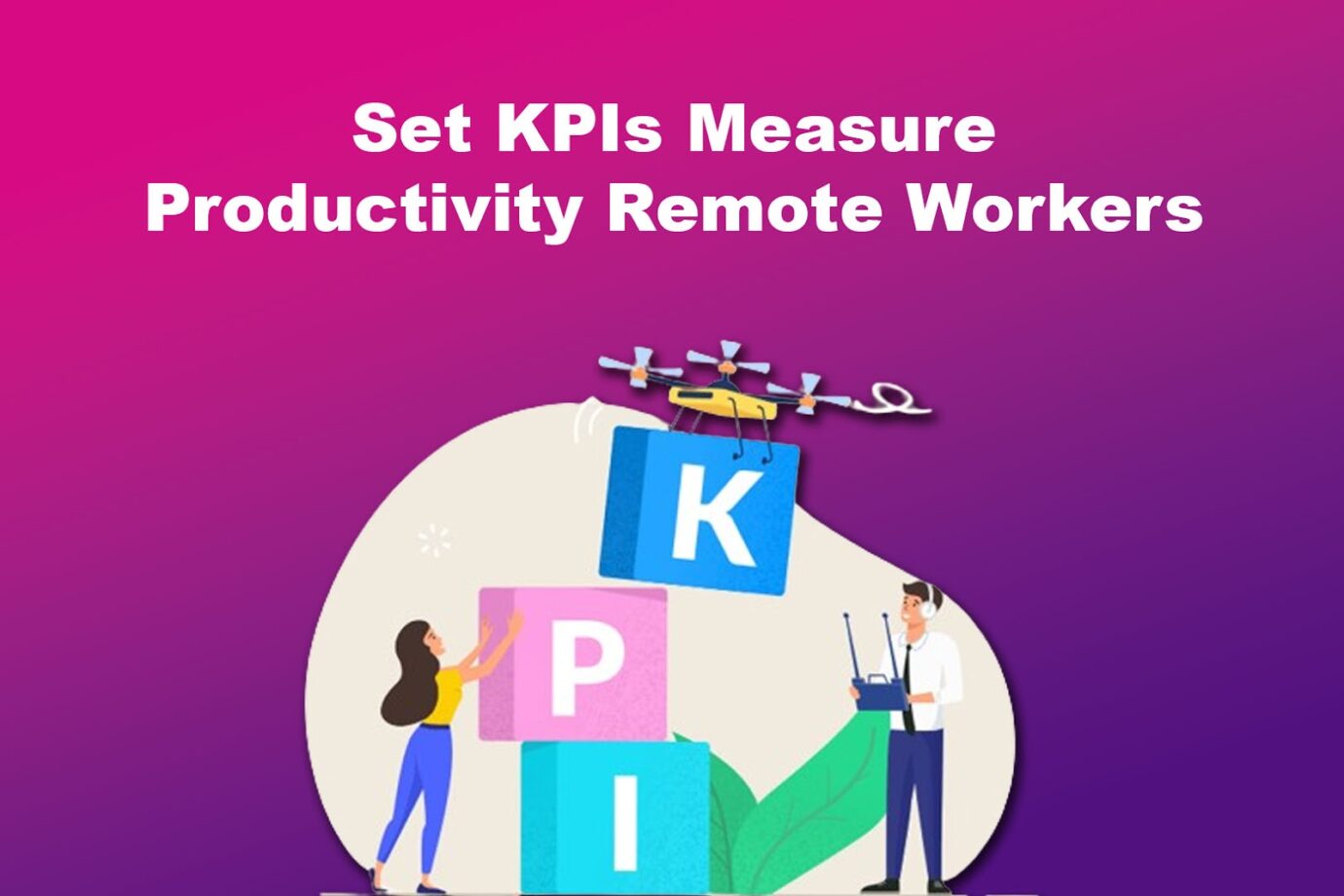
KPIs include sales targets, customer satisfaction scores, and areas that rely on an employee’s performance. Monitoring KPIs also allows you to track progress, spot trends, and make informed decisions to improve productivity. They promote transparency, align remote workers with organizational goals, and foster a results-oriented culture.
Find out more about KPIs from Linkedin.com
2. Establish Specific Milestones for the Task Delegated
Breaking down larger projects into smaller, manageable tasks and turning them into milestones is an excellent employee productivity measure. It provides a clear roadmap that allows you to track progress gradually.
Each milestone represents a vital step towards project completion, showing clear achievement indicators. This not only helps in measuring productivity but also assists in identifying potential challenges in the process early.
Setting milestones also creates a sense of achievement for remote workers, as they can see how their work is progressing. This provides them with motivation and job satisfaction.
Related Post: Virtual Leadership Skills
3. Set Goals and Deadlines
Setting clear goals and deadlines is also an effective way of measuring the productivity of remote workers. This allows you to clarify the objectives you want to achieve and when you want to achieve them.
By setting clear goals and deadlines, you can guide your team toward specific outcomes, which helps them stay focused and motivated.
Tracking progress towards these goals gives managers valuable insights into how their team performs, making it easy to measure productivity. Furthermore, this may help managers identify areas where employees need additional support or improvements.
Learn more about how to set project goals from Linkedin.com.
4. Use Online Project Management Tools
Online project management tools can provide a centralized platform to organize tasks, manage communications, and streamline workflows. These tools also come with features such as documentation and progress tracking, facilitating real-time collaboration.

Online project management tools also provide transparency and allow managers to monitor the status of tasks and projects.
5. Track the Amount of Time Your Employees Spend on Work
Time tracking is a helpful way to measure the productivity of remote workers. It enables managers to monitor how employees allocate their working hours, making gauging progress and productivity easier.
Time tracking also helps understand individuals’ working patterns and identify areas where employees need less time.
However, balancing tracking productivity and respecting employees’ autonomy in managing their time is essential.
As a manager, you should inform your employees of the importance of time tracking and set clear boundaries. This will ensure that everyone is on the same page and that the process is fair and respectful.
Here are 13 time-tracking software that can help you monitor a remote worker’s productivity.
6. Review Performance Regularly
During performance reviews, managers often discuss the goals set for employees during a specific period. By assessing whether an employee meets, exceeds, or falls short of these goals, you can gain insight into the employee’s productivity.
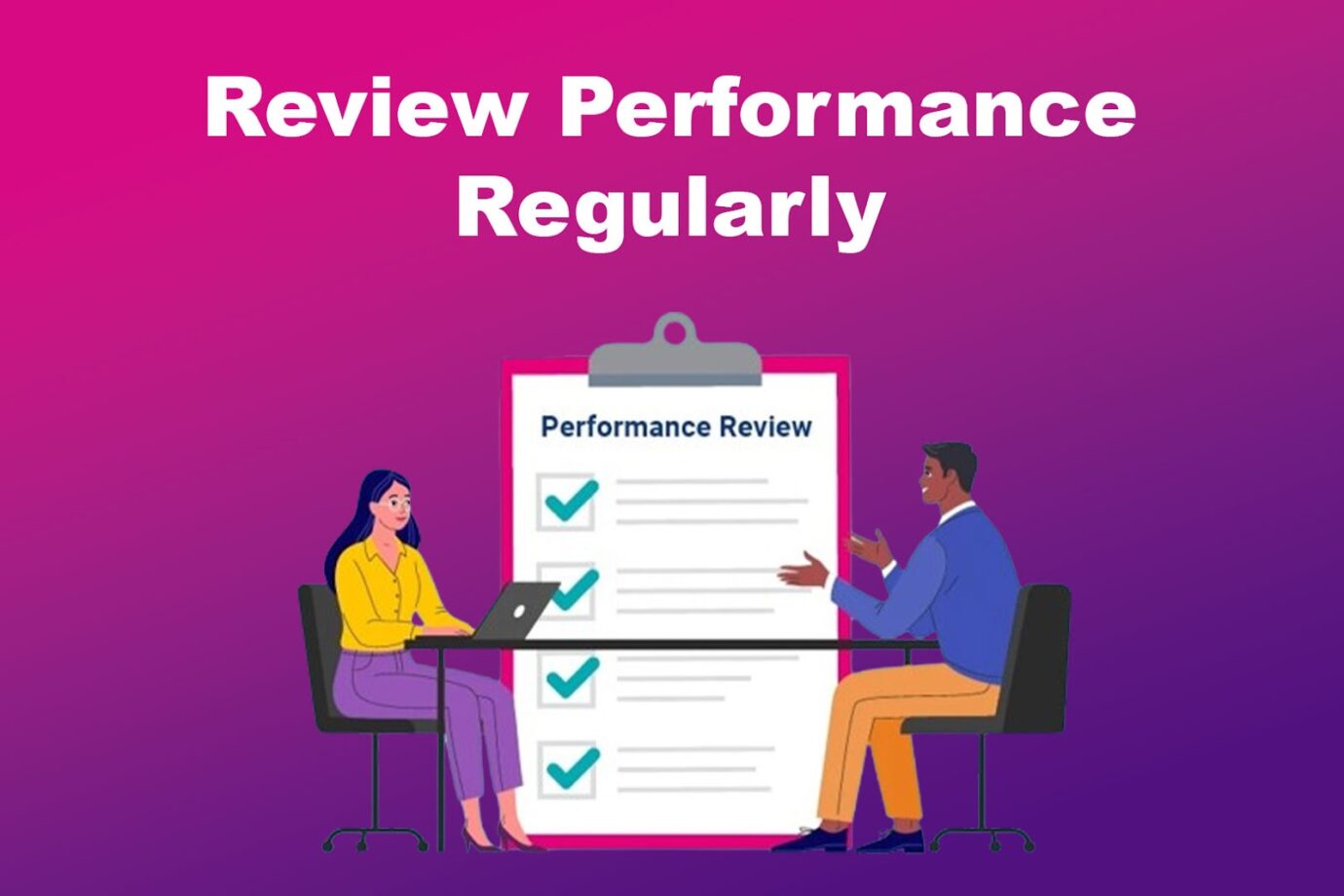
Evaluating these goals can objectively measure an employee’s performance against predefined expectations, showing their contribution to the organization. Additionally, managers can review the employee’s output and deliverables to determine their level of productivity.
If an employee’s performance is dropping, there’s a chance they’re working on a second remote job. But is it illegal to work two remote jobs at the same time?
7. Utilize Employee Feedback
Obtaining employee feedback is a valuable tool for measuring the productivity of remote workers. You can gather feedback through surveys or team meetings.
Collecting this feedback can help you better understand their challenges and experiences and identify areas where they need support. You can use this information to implement changes that enhance productivity in remote working conditions.
Note: Measuring the productivity of remote employees can be challenging, but it is essential for effective management and ensuring efficient work.
How to Make Your Remote Team More Productive
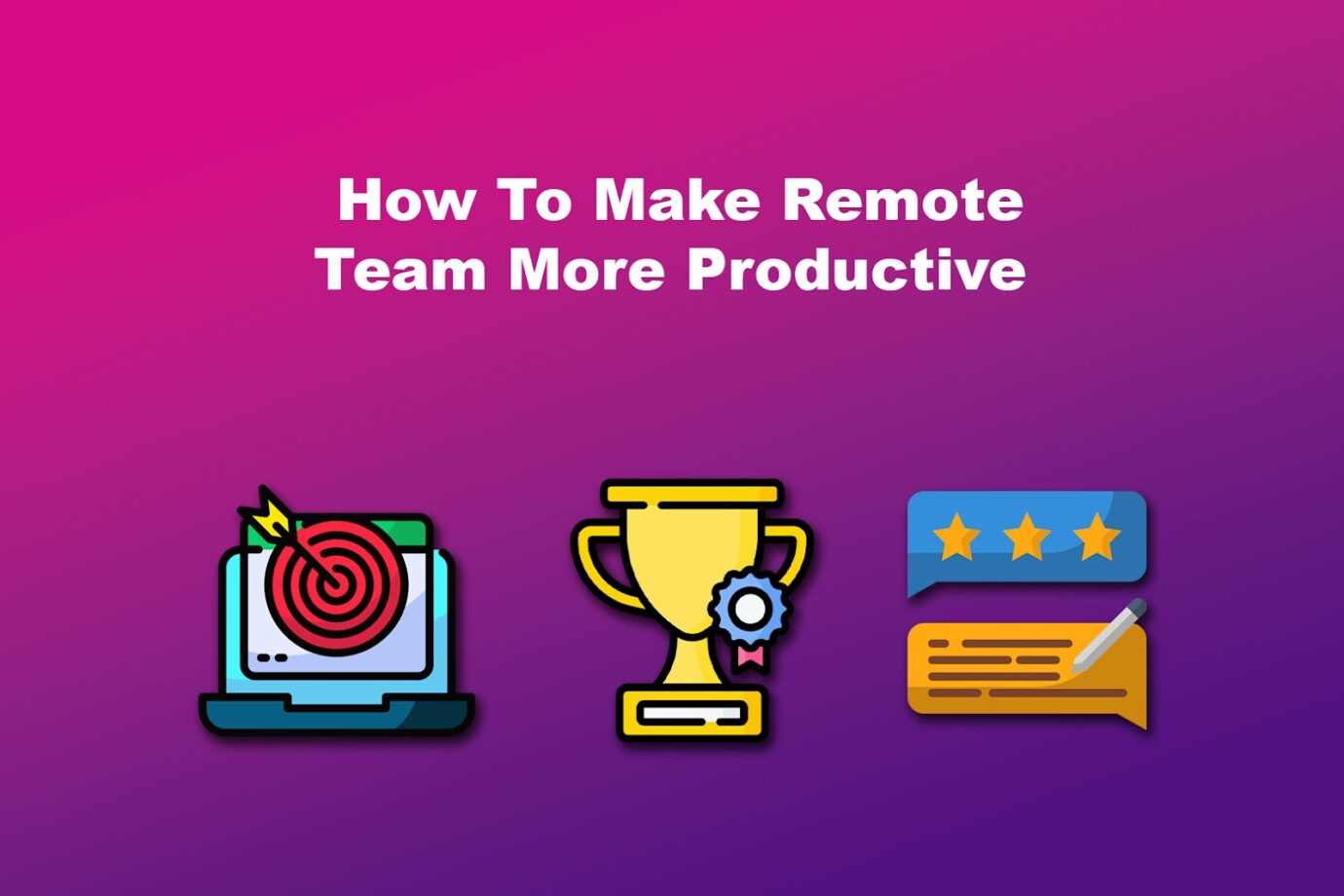
Managing remote employees is not just about measuring their productivity. You must also commit to ensuring remote workers are enjoying their work, which can lead to increased productivity.
Related Post: How Do Employers Track Remote Workers?
Here is an in-depth explanation of how to make your remote team more productive:
- Conduct Regular Feedback.
Feedback doesn’t only measure employee productivity. Performance reviews, recognition, and constructive feedback create a comfortable environment for team members to share ideas. This fosters accountability and growth, improving productivity. - Balance Workload.
Giving too much workload to team members can lead to burnout and thus reduce productivity. Ensure workload is distributed fairly by considering individual strengths, skills, and experience on the job. - Use Productivity Tools.
Project management tools like Trello, Jira, or Asana can help organize tasks and inform everyone about project progress. Time-tracking tools like Harvest and Toggl can also help monitor time spent on tasks and identify areas of improvement, thus increasing productivity. - Set Clear Expectations.
Informing your remote team about your expectations about a particular task allows them to understand the goal they need to achieve. By knowing this goal, they can identify the time and effort they need to exert to complete the task. - Reward Hard Work.
Boost employee morale by recognizing and rewarding their achievements. This fosters a culture of excellence, ensuring commitment and productivity.
Discover more about how to improve the productivity of your remote team from Forbes.
Not sure if your efforts to boost your employee productivity is paying off? Consider hiring aremote workforce consulting service.
What Factors Affect Employee Productivity During Work From Home?
These are the factors that affect employee productivity during work from home:

- Self-Discipline.
Remote employees can quickly lose focus, procrastinate, or get distracted. A lack of self-discipline can lead to reduced work quality, missed deadlines, and lower productivity. - Productivity Tools.
Using the right productivity tools can improve efficiency and help employees stay organized and focused. Proper management tools facilitate collaboration and help remote workers track tasks and deadlines. - Motivation.
Working from home can lead to feelings of isolation, disengagement, and reduced motivation. This can cause employees to struggle to focus, resulting in decreased productivity and low-quality work. - Work-Life Balance.
Maintaining a healthy work-life balance is crucial for employees and can enhance productivity. Employees who take breaks, spend time with their family and friends, and exercise is more likely to be energized and productive than others.
Related Post: Remote Work Micromanagement
What Are the Benefits of Measuring Productivity of Remote Workers?
Here are the benefits of employee productivity measures:
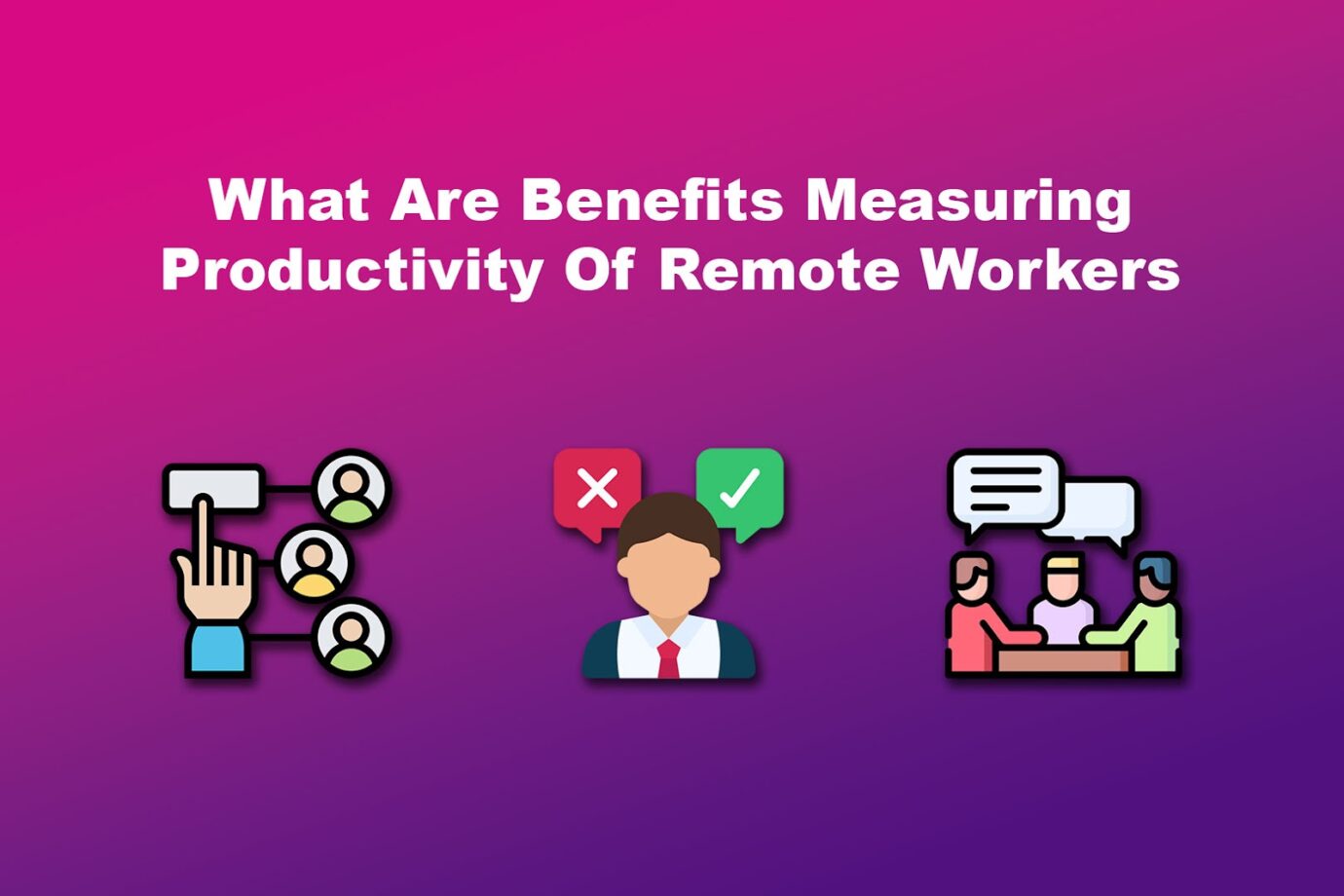
- Promotes Accountability.
Evaluating the productivity of remote workers helps measure their performance and identify areas for improvement, ensuring accountability. - Facilitates Communication and Collaboration.
Regular check-ins and discussions about productivity metrics enable employers and employees to share insights and work challenges. This fosters better communication and collaboration, building a sense of unity. - Improves Resource Allocation.
Tracking remote workers enables employers to understand how employees utilize their resources. As a result, they can plan and allocate resources better where needed, improving team performance. - Enhances Better Decision-Making.
Productivity metrics provide valuable data for evidence-based decisions, improving overall efficiency through investments in technology and other specific tools.
Related Post: Hybrid vs. Remote Work
What Are the Challenges in Measuring Productivity of Remote Workers?
These are the challenges of measuring the productivity of remote workers:
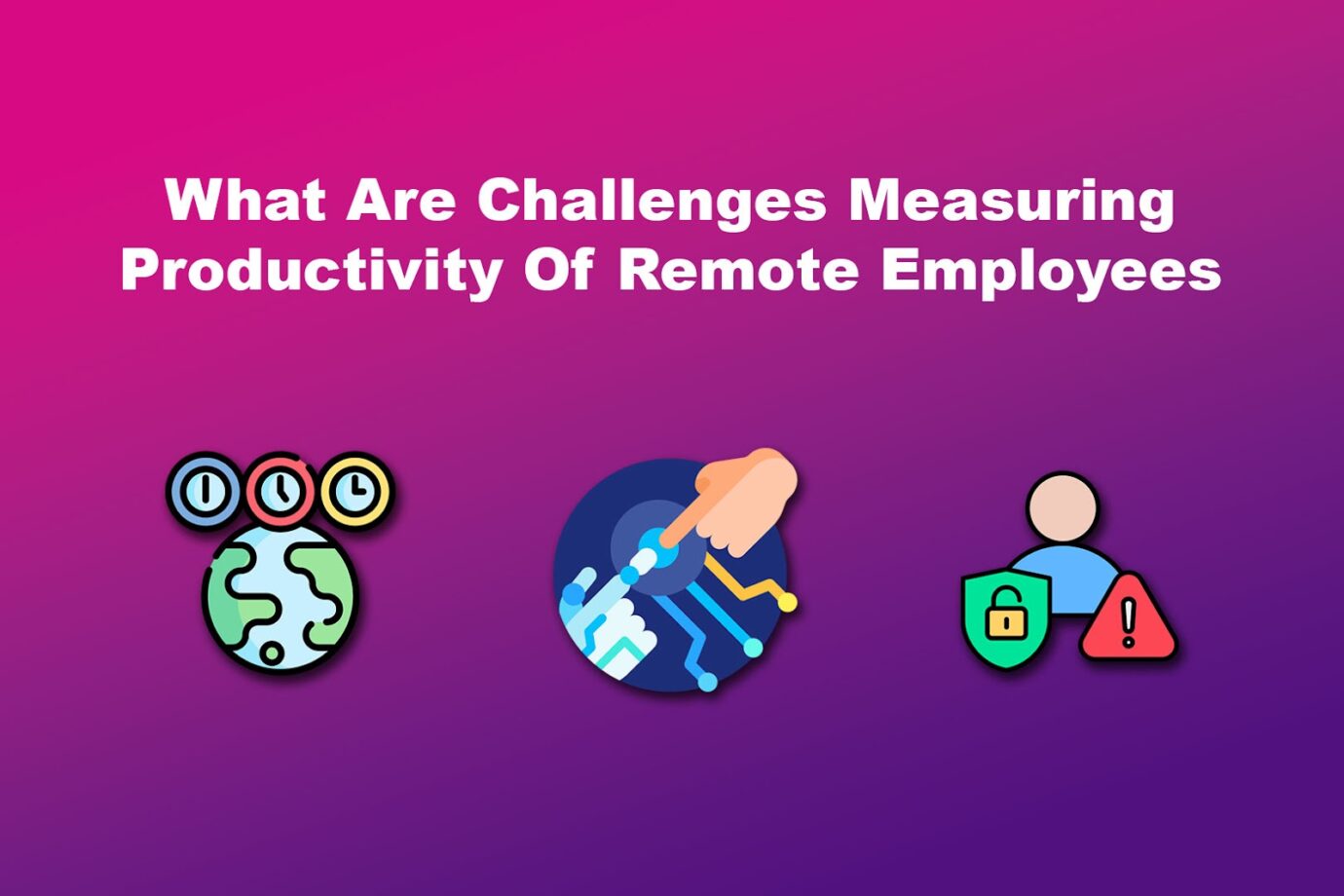
- Technological Problems.
The effectiveness of remote work depends on technology. Technical issues such as poor internet connectivity or system failures can disrupt work, making it challenging to measure employees’ productivity. - Privacy Concerns.
Remote work involves transmitting data over the internet. Balancing productivity monitoring and user privacy can be challenging. Most companies require employees to connect through virtual private networks, which can be vulnerable to cyber threats. - Lack of Physical Presence.
Assessing employee engagement and effort is difficult in a remote setup where physical observation is impossible. Besides, productivity measures, such as time spent on a desk or working habits, may not accurately reflect performance. - Navigating Different Time Zones.
Collaboration and real-time communication can be challenging for team members in different time zones. This may result in delays in obtaining information, making it difficult to measure productivity.